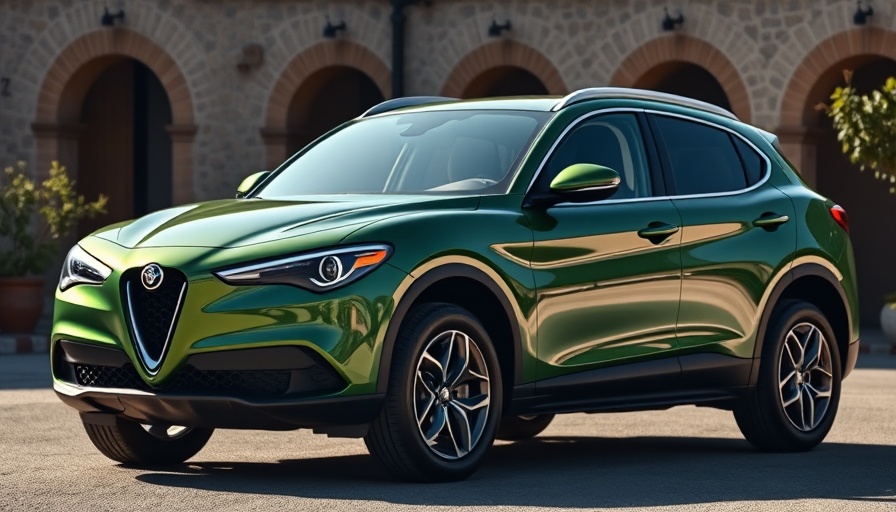
Alfa Romeo’s Commitment to Internal Combustion in a Hybrid Future
As the automotive landscape evolves, Alfa Romeo remains steadfast in balancing tradition with innovation. Recently, CEO Santo Ficili announced that the next-generation Stelvio and Giulia will include internal combustion engines as part of a hybrid powertrain, showcasing the brand's commitment to not completely abandon gasoline power. This strategic move reflects a broader trend within the automotive industry to create flexible powertrains that can cater to diverse consumer preferences and regulatory requirements.
Shifting Market Dynamics and Consumer Preferences
The announcement comes amidst a backdrop of changing market dynamics where electrification is gaining momentum. Yet, the reality is that many consumers are still attached to the performance and feel of traditional gasoline engines. Alfa’s decision to introduce hybrid setups indicates their understanding of customer sentiment while also preparing for a future where electric vehicles dominate. As noted by industry figures, such as former Alfa CEO Jean-Philippe Imparato, providing a multi-energy lineup may just be the best path forward to align with evolving expectations.
The Impending Launch: A Dual Energy Future
The redesigned Stelvio is set to make its debut on June 24, in conjunction with the brand's 115th anniversary celebration. It is built on Stellantis’s STLA Large platform, which supports a range of powertrains, including hybrid and electric options. With reported capabilities for 500 miles on a single charge, this architecture promises to bridge the gap between traditional combustion engines and the shifts towards electric mobility. Furthermore, high-performance variants like the Quadrifoglio may soon pack impressive power figures, surpassing what was previously thought possible.
What This Means for Alfa Romeo's Identity
Alfa Romeo's pivot towards hybrid technology may mark a critical point in maintaining its heritage while also adapting to the future. The potential for an SUV-shaped Giulia further illustrates a significant shift in the brand’s traditional automotive identity. With the prospect of an entire lineup consisting of performance-oriented SUVs, Alfa Romeo could successfully blend practicality with its storied motorsport legacy. This approach points to a desired balance—retaining excitement and performance within a responsible framework designed for the eco-conscious driver of tomorrow.
Industry Reactions: A Mixed Response
The automotive community has had varied reactions to the hybrid announcements. Some enthusiasts express skepticism, desiring a purely combustion-driven vehicle, especially from a brand renowned for its racing pedigree. Conversely, the acknowledgment of hybrid technologies also heralds an opportunity for the automaker to appeal to a wider audience. As manufacturers increasingly embrace electrification, Alfa Romeo's strategy could help stabilize their sales performance in markets facing declining gasoline sales.
Looking Ahead: Predictions and Opportunities
With both the Stelvio and Giulia confirming gas-powered versions alongside electrified models, consumers might expect enhanced performance and versatility unlike anything seen before from the brand. The embrace of hybrid systems may allow Alfa Romeo to capture a segment of buyers unwilling to fully transition to electric vehicles just yet. As more details are revealed ahead of their launches, it’s plausible to envision a thriving future where Alfa continues to unite its performance heritage with modern technological advancements.
In summary, Alfa Romeo’s commitment to hybrid powertrains while retaining internal combustion engines showcases a balanced approach to meet diverse consumer demands. As we eagerly await the debut of the redesigned Stelvio and Giulia, it is a moment of transformation for this iconic brand, blending past legacies with future possibilities.
 Add Row
Add Row  Add
Add 




 Add Row
Add Row  Add
Add 

Write A Comment